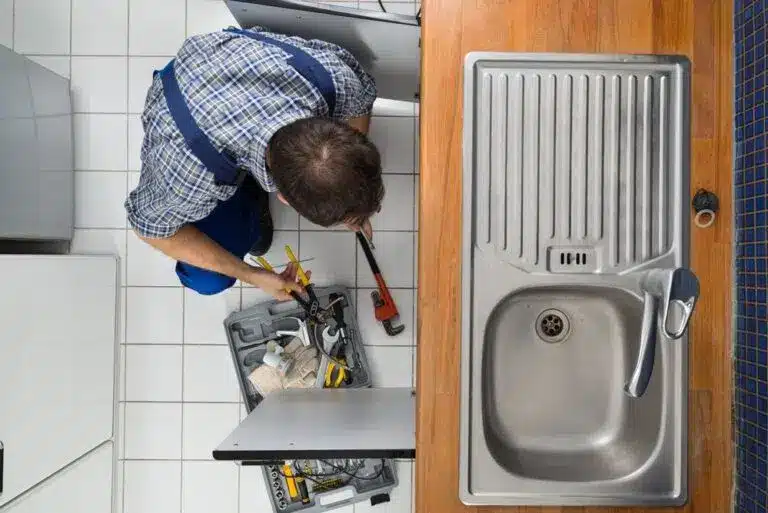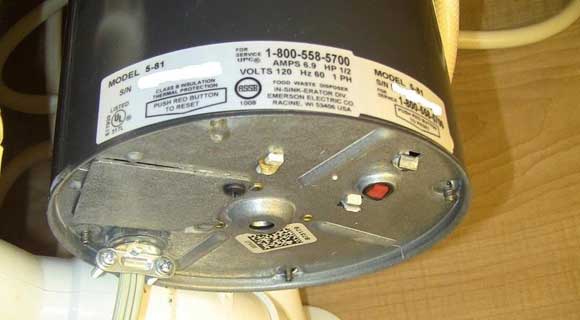Effortless Steps to Stop a Leak in Your Garbage Disposal
Effortless Steps to Stop a Leak in Your Garbage Disposal
Blog Article
How do you actually feel in regards to Tips on Fixing a Leaking Garbage Disposal?

Garbage disposals are important kitchen area devices that aid in dealing with food waste efficiently. Nonetheless, a dripping garbage disposal can be a discouraging and untidy problem to manage. Luckily, numerous leaks can be dealt with quickly with a few straightforward actions. In this short article, we will discuss just how to repair a leaking waste disposal unit efficiently.
Intro
Waste disposal unit are installed under cooking area sinks and are created to shred food waste into smaller sized pieces, allowing it to go through the plumbing system conveniently. While these devices are usually trustworthy, leaks can happen over time as a result of deterioration, loose links, or damage to the system.
Step-by-Step Overview to Taking Care Of a Dripping Garbage Disposal
Switch off the Power
Before trying any fixings, make sure that the power to the garbage disposal system is switched off to avoid the threat of electric shock.
Find the Leakage
Determine the specific location of the leak and establish the cause
Tighten up Connections
Utilize a wrench to tighten up any loosened links between the disposal system and the pipes system.
Replace Seals or Gaskets
If the leak is because of worn seals or gaskets, get rid of the old components and replace them with brand-new ones.
Patching Cracks or Holes
For fractures or openings in the disposal unit, use epoxy or an appropriate patching material to seal the broken location.
Identifying the Source of the Leakage
Prior to attempting to take care of a leaking waste disposal unit, it is important to identify the source of the leakage. This can usually be done via visual evaluation or by performing straightforward tests.
Visual Evaluation
Check the waste disposal unit device carefully for any indications of water leakage. Pay very close attention to locations around seals, gaskets, and link factors.
Examining for Leaks
One way to evaluate for leakages is by running water with the disposal device and looking for any kind of noticeable indicators of leak.
Usual Causes of Leaks in Garbage Disposals
Worn Seals and Gaskets
Seals and gaskets play an important duty in protecting against water from dripping out of the waste disposal unit. With time, these parts can wear away, bring about leakages around the disposal device.
Loose Links
The links in between the waste disposal unit and the pipes system can end up being loosened in time, triggering water to leak out during operation.
Splits or Openings in the Disposal System
Physical damage to the garbage disposal, such as fractures or openings in the housing, can also lead to leaks.
Devices and Materials Needed for Repairing a Leaking Waste Disposal Unit
Prior to starting the repair process, gather the needed devices and products, consisting of a screwdriver, adjustable wrench, plumbing's putty, replacement seals or gaskets, and epoxy or patching material for fixing fractures or openings.
Examining the Waste Disposal Unit After Repair Work
When the repair service is total, check the waste disposal unit by running water via it to make certain that the leakage has actually been resolved.
Preventive Maintenance Tips to Avoid Future Leaks
To avoid future leaks, it is important to do routine maintenance on your garbage disposal. This includes keeping it clean, avoiding placing non-food things or tough objects down the disposal, and periodically looking for leakages or various other problems.
Final thought
To conclude, repairing a leaking garbage disposal is a relatively uncomplicated procedure that can be finished with standard devices and materials. By following the steps laid out in this write-up and exercising precautionary maintenance, you can maintain your waste disposal unit in good working problem and avoid expensive repairs in the future.
HERE’S HOW TO FIX YOUR GARBAGE DISPOSAL
WHAT TO DO IF SOMETHING IS STUCK IN YOUR GARBAGE DISPOSAL
If the impeller won’t turn, there’s probably something stuck in the disposal. It could be a steak bone or peach pit, although plumbers report pulling all sorts of inappropriate objects out of disposals, such as bottle caps or aluminum foil. Make sure power to the disposal is off, and look inside to see if you can see the source of the jam.
Never stick your fingers in a disposal. Pull out anything you see with tongs or pliers.
If the disposal still won’t work, it may be time to call a plumber or consider buying a new disposal. GEM Plumbing & Heating is here for all of your garbage disposal needs.
WHAT TO DO IF YOUR GARBAGE DISPOSAL DRAIN IS CLOGGED
Take everything out from underneath your sink and put a bucket or other container under your disposal to catch any water that drains out. Disconnect your disposal from the power supply. If it’s plugged into a wall outlet, unplug it. If it’s hardwired into an electrical box, go to the electrical panel and turn off the breaker for the disposal. Pour ¼ cup of baking soda into the drain, followed by ½ cup of white vinegar. Give the solution a few minutes to fizz and do its work. Look into the disposal with a flashlight to see if you can see an object that might be causing the clog. If you see it, remove it using tongs or pliers. MORE TIPS ON DEALING WITH A CLOGGED GARBAGE DISPOSAL
Never use drain cleaner in a garbage disposal. It can damage the plastic parts inside the disposal. You can also be splashed with the caustic liquid while working to clear the clog. Beware! Never stick your fingers into a garbage disposal. Trust us — not a good idea. In many instances, your dishwasher drains through your garbage disposal. This allows the disposal to grind any large food particles that may be drained out of your dishwasher. There are some jurisdictions, however, where the plumbing code prohibits such a connection. WHAT TO DO WHEN YOUR DISHWASHER DRAINS THROUGH THE DISPOSAL
Run some water in the sink so your plunger has at least a ½-inch of water to create a seal and plunge vigorously up and down several times. You may need to repeat this several times. Run hot water down the drain to clear any residue that remains.

Do you enjoy reading up on Why Is ? Give feedback down below. We'd be glad to hear your insights about this content. We hope that you come back again later on. Do you know about somebody else who is looking into the niche? Take a moment to promote it. Thanks so much for going through it.
This Page Report this page